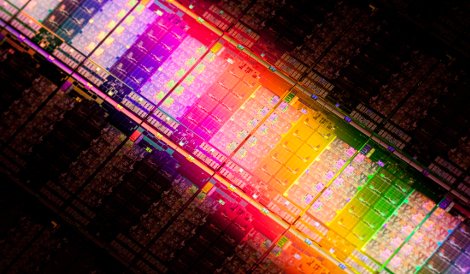Intel Corp. launched the next generation of Xeon processors for x86 data center applications Tuesday, increasing performance, the number of cores and cache capacity, while slightly reducing power consumption compared to the previous-generation Xeon family.
Xeon is Intel's flagship general-purpose processor line. These are chips that power servers inside the majority of the world's data centers.
Diane Bryant, SVP and general manager of the company's Datacenter and Connected Systems Group, said the new Xeon E5-2600 v2 processor family performed 35% better than the previous-generation Xeon E5-2600 v1, launched in March of last year.
“We've done it while maintaining, or actually slightly decreasing, power,” Bryant said, referring to the v2 family's power requirements. She attributed better energy efficiency to the switch from a 32-nanometer manufacturing process used to build the v1 processors to a 22nm one, as well as additional advanced power controls in the latest Xeons.
The new processors come with up to 12 cores (50% more than v1 chips) and 30MB last-level cache. DRAM frequency has been increased as well.
In addition to performance improvements, Intel has embedded a number of features into the new chip family.
These include two new security features: OS Guard and Secure Key. “The way you get the greatest level of compute security is by embedding it into hardware,” Bryant said.
OS Guard isolates operating system privilege from application privilege, which prevents malware from taking action on a user application's behalf, Bryant explained. Secure Key generates a random 64-bit encryption key – a feature previously available only through discrete dedicated security devices, she said.
Compute performance was not the only problem Intel was solving for when designing the new Xeon chips. The company is offering versions of the processors optimized for storage and networking gear.
To address today's fastest-growing workloads, such as cloud computing, the company wants to “add computational might into storage solutions,” Bryant said. One purpose is real-time in-line data deduplication.
Because it is very compute- and I/O-intensive, deduplication has historically been an off-line backup activity. With the new Xeon increasing hashing algorithm performance by 2.2x and improving I/O bandwidth by up to 3.5x, Intel is hoping to enable deduplication to happen in real time.
On the network side, the company has embedded data-packet acceleration capabilities for Layer 3 traffic.
Intel wants the chip to be a platform for Network Function Virtualization, which, in combination with Software Defined Networking (SDN) capabilities, can enable more centralized and automated network management than available today.
The announcement comes on the heels of another major Intel launch in the data center space. The company unveiled its second-generation Atom C2000 processors and System-on-Chip (SoC) products for microservers on 4 September.
The 64-bit Atom SoCs are targeted at users for whom low power consumption is crucial. These processors compete directly with low-power ARM processors for servers.
The only vendor with a 64-bit ARM SoC already on the market is Applied Micro. Other ARM vendors, such as AMD, Calxeda and Texas Instruments, among others, are expected to roll out 64-bit solutions in the near future.

